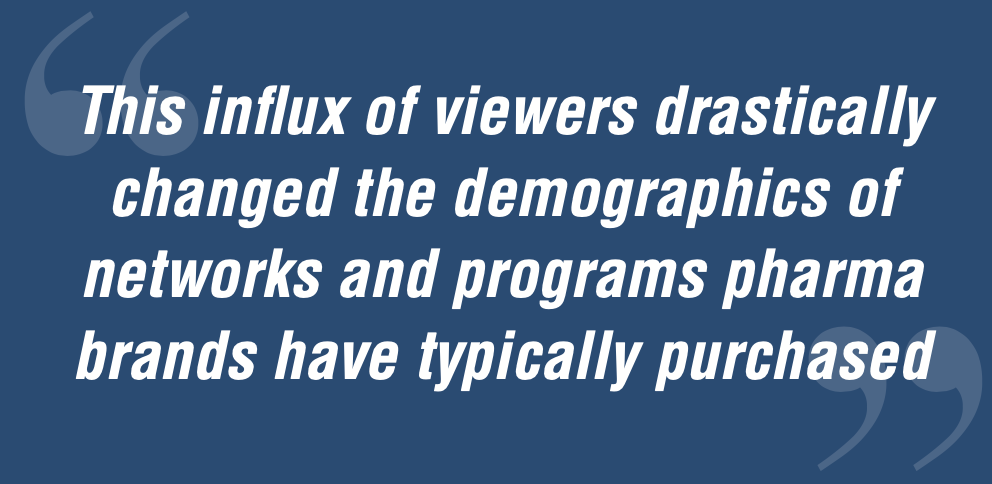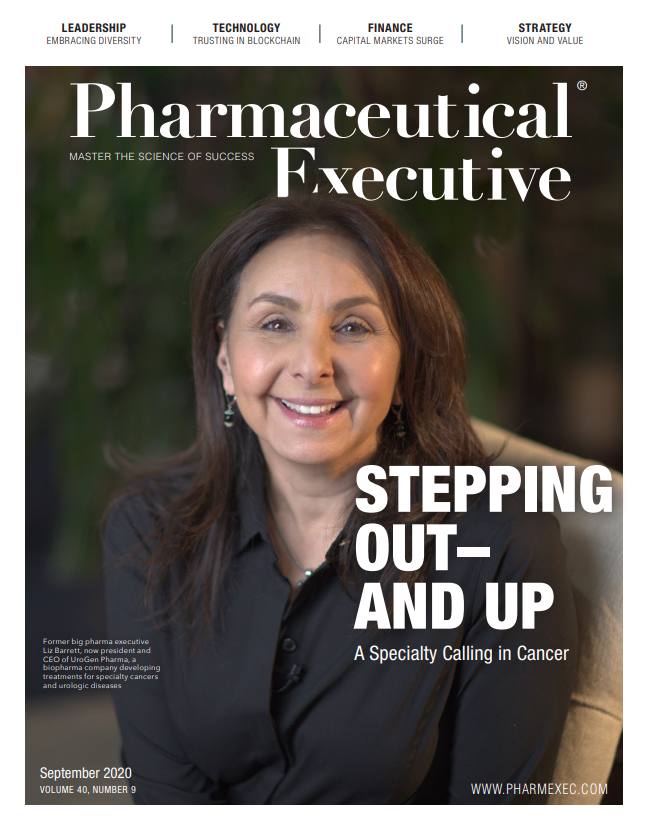COVID Causes Pharma Marketers to Watch TV
Across a number of ad categories, especially pharmaceutical and medical ads. According to the iSpot.tv TV Advertising COVID report on pharmaceuticals, following observations in March and early April, pharmaceutical and medical ads have been increasing in impression volume across all TV platforms. These categories are expected to reach $6.8 billion in ad spend, nearly $700 million more than last year.
Viant, a people-based advertising technology company that focuses on omnichannel digital advertising investments, confirms this trend. The company has seen similar growth across the pharmaceuticals category, particularly in the first half of 2020, compared to the first half of last year. In addition to seeing a 31% increase in pharmaceutical advertisers overall in the first half of 2020, up from 279 pharmaceutical advertisers the year prior, the company has noticed a surge in ad spend in the category by more than 50%. Specifically, categories such as osteoporosis, depression, bipolar, and insomnia contributed to that growth.
Tuning in to the power of TV was a no-brainer for pharma marketers. Under quarantine orders, people naturally turned on their TVs, many flocking to news stations for continuous COVID coverage. With healthcare provider waiting rooms closed, marketers began to move their money to where audiences were.

“The average consumer started watching five or more hours of news a day,” says Josh Hare, senior vice president of sales, East, at Viant Technology. “This influx of viewers drastically changed the demographics of networks and programs pharma brands have typically purchased. Streaming increased dramatically and DOOH (digital out-of-home media) was rendered ineffective with stay-at-home orders. Media plans were paused and then aligned with the shift in consumer behavior.”
TV is one of the most regulated sectors in the advertising industry, so pharma understands TV reach and frequency that results in market penetration. TV allows pharma marketers to address compliance through a 60-second spot in a historically trusted environment. It is a medium that continues to prove effective.
The move to TV advertising wasn’t the only marketing shift for pharma. Hare also saw a departure from typical condition-based messaging. Standard messages that list the drug, its benefits, and risk factors no longer seemed sufficient. The pandemic opened the door for marketers to dig deeper and connect with consumers.
“Post-COVID, more manufacturers’ branding messages entered the market,” says Hare. “It’s the manufacturer saying, ‘We are in this together’ or ‘We are working toward a cure.’ Some companies replaced their condition-specific messaging with brand messaging while others added new brand campaigns to their media strategy. An oncology drug or an MS drug might have removed the imagery of people gathering to be COVID sensitive, but the message stayed the same.”
Another noticeable change post-COVID was the adoption of technology to link on-air messages with digital campaigns. “Though TV is still a mainstay, more digital solutions are being used to help pharma marketers improve consumers’ targeted brand experience by finding their target audience online,” says Hare. “This is done by aligning with HIPPA-compliant data partners and digital platforms that have the ability to link or extend their on-air message to the same online audience.”
As COVID continues to evolve, it is clear that pharma advertising will follow suit. The challenge will remain in monitoring trends, identifying opportunities, and executing programs to stay at the forefront of consumers’ minds.
Elaine Quilici is Pharm Exec’s Senior Editor. She can be reached at equilici@mjhlifesciences.com.

The Misinformation Maze: Navigating Public Health in the Digital Age
March 11th 2025Jennifer Butler, chief commercial officer of Pleio, discusses misinformation's threat to public health, where patients are turning for trustworthy health information, the industry's pivot to peer-to-patient strategies to educate patients, and more.
Navigating Distrust: Pharma in the Age of Social Media
February 18th 2025Ian Baer, Founder and CEO of Sooth, discusses how the growing distrust in social media will impact industry marketing strategies and the relationships between pharmaceutical companies and the patients they aim to serve. He also explains dark social, how to combat misinformation, closing the trust gap, and more.